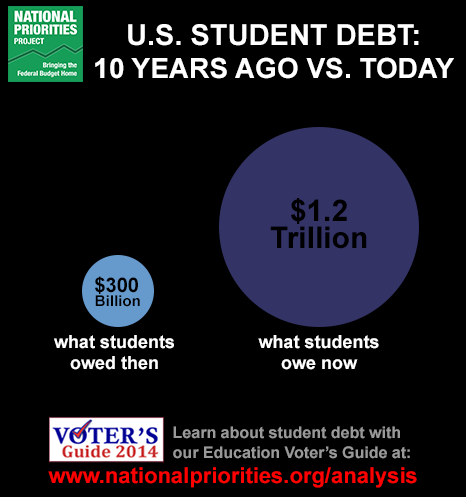Spotlight: Education and Student Loans Voter’s Guide
By
Lindsay Koshgarian
Posted:
|
Education

My daughter is a first year school teacher in a … low income school. [She] ends up paying for supplies out of her own pocket a lot. And mine too. –Debra, Winston-Salem, NC
I receive both a Pell Grant and Stafford Loan each year. I also benefit from Federal Work-Study. Both of these have made it possible for me to go to [college] without having to take out large private loans. –Mia, Pasadena, CA
Nearly seven in ten Americans say that improving education should be a top priority for the President and Congress. And while that’s not a ten out of ten, consider that in the same poll only three issues outranked education: strengthening the economy, improving the job situation, and protecting the nation from terrorism (in that order).
So, on to the million dollar question: does our federal spending reflect the fact that education is a top priority for Americans? This week, we’re spotlighting our education-themed voter’s guides (one on Education, and one on Student Loans and Student Debt) to give you the scoop.
Our Voter’s Guides provide explanations, key facts and figures, and questions you can ask candidates. Here are some of the key facts you’ll find:
- Education makes up only six percent of our nation’s discretionary spending proposed for 2015.
- Almost half of public schools receive federal funding for underserved schools through the federal government’s Title I program.
- Pell grants make it possible for the lowest income students to go to college. In 2012, nearly three quarters of Pell grant recipients had family incomes under $30,000.
Check out our Education Voter’s Guides, and if you have a story to share about public education, please post it on our Faces of the Federal Budget page.